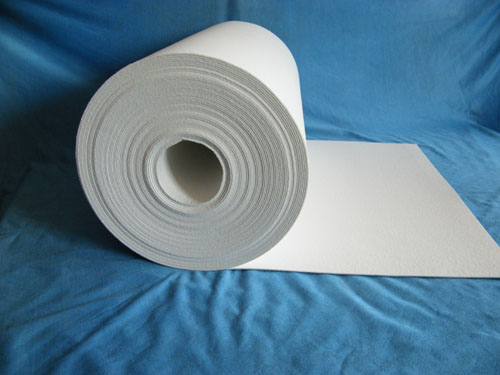SEARCH
when you need our product,simply enter the name of the product you are looking for to continue.
Refractory Knowledge
- Ceramic Fiber Blanket Not Equal To Ceramic Fiber Felt
- Which refractory materials are acidic products?
- Refractory Materials Used In the Bogie Hearth Furnace
- Introduction of Refractory Materials for Foreign Glass Kiln
- Lightweight firebrick ten functions
- Clay refractory ramming material
- Phone:0086-371-63838939
- Email:sales@sunriserefr.com
- Office Address: No.36 Fengchan Road Of Zhengzhou, Henan, China (Mainland)
Contact Us
News & Events
Knowledge and classification of ceramic fiber
Date:2020-03-03 16:21 | From:Zhengzhou Sunrise Refractory | Author:admin
Ceramic fiber porous insulation material requires only a few materials (fibers) to form a stable structure. Compared to ceramic porous insulation materials, ceramic fiber insulation materials are lightweight, porous, low thermal conductivity, and specific heat capacity. Large characteristics and can withstand strong loads. This material has been used in many fields such as filtration, thermal insulation, biomedicine, composite materials and so on. The reusable thermal protection structure represented by ceramic fiber material is widely used in the thermal protection systems of various advanced aircrafts at home and abroad, and has important application value and development prospects.
Ceramic fibers can be divided into two categories: non-oxide ceramic fibers (such as SiC fibers, C fibers) and oxide (including composite oxide) ceramic fibers (such as aluminum silicate fibers, Al2O3 fibers).

(1) Silicon carbide fiber. Silicon Carbide (SiC), commonly known as silicon carbide or carborite, is a synthetic compound that is covalently bonded. It can be prepared by chemical vapor deposition method, carbothermal reduction method, powder sintering method and precursor conversion method. Pure silicon carbide is colorless and transparent. Silicon carbide used in industry is usually light green or black because it contains impurities such as free iron, silicon, and carbon.
Because silicon carbide has good high temperature characteristics, such as oxidation resistance, high temperature strength and stability, good thermal conductivity, low density, low expansion coefficient, and small creep, it can be used as a combustion chamber for high temperature gas turbines, High-temperature nozzles, turbine stationary blades, etc. Because of its high thermal conductivity and good insulation properties, silicon carbide can be used as a high-temperature heat exchanger in metallurgical industrial furnaces, as well as substrates and packaging materials for large-scale integrated circuits. With its high hardness, wear resistance, and resistance to acid and alkali corrosion, mechanical seal materials such as sliding bearings, valve discs, fan blades, and corrosion-resistant pipes can be prepared in the machinery and chemical industries.
In addition to good physical properties, silicon carbide also has excellent chemical properties. In a non-oxygen atmosphere, the silicon carbide surface gas phase contains only 5% silicon at 2300 ° C. However, when silicon carbide is exposed to oxygen at 1000 ° C, the surface begins to oxidize, but silicon carbide can form a SiO2 protective film to prevent oxidation reactions keep going.
(2) Carbon fiber. Carbon fiber refers to a fibrous carbon material. A fibrous carbon material formed by heating organic fibers in an inert gas to a temperature of more than 1000 ° C and forming a carbon content of more than 90%. Carbon fiber is a new type of inorganic material. Its density is 1.5-2g / cm3, which is 1/4 of the density of steel and 1/2 of the density of aluminum alloy, but its strength is 4, 5 times greater than that of steel. It has a small coefficient of thermal expansion and good thermal shock resistance. It will not explode if it suddenly drops from a high temperature of several thousand degrees Celsius to normal temperature, and has good lubricity and electrical conductivity. Carbon fiber has similar chemical properties to carbon, is inert to general alkalinity, and does not embrittle at liquid nitrogen temperature. In a non-oxygen environment, it does not melt even at a high temperature of 3000 ° C, but in an air atmosphere, a significant oxidation phenomenon occurs when the temperature is higher than 400 ° C, generating CO and CO2. Therefore, carbon fiber can greatly reduce the structural weight of components, improve technical performance, and make it widely used in aerospace vehicles.
According to the different raw materials used, carbon fibers can be divided into four types: polyacrylonitrile-based carbon fibers, pitch-based carbon fibers, cellulose-based carbon fibers, and phenol-based carbon fibers.
If you have any needs our help or are interested in our products, you can click online advisorychat with us online, or call our customer service telephone: 0086-0371-63838939. We will sincerely serve for you!
